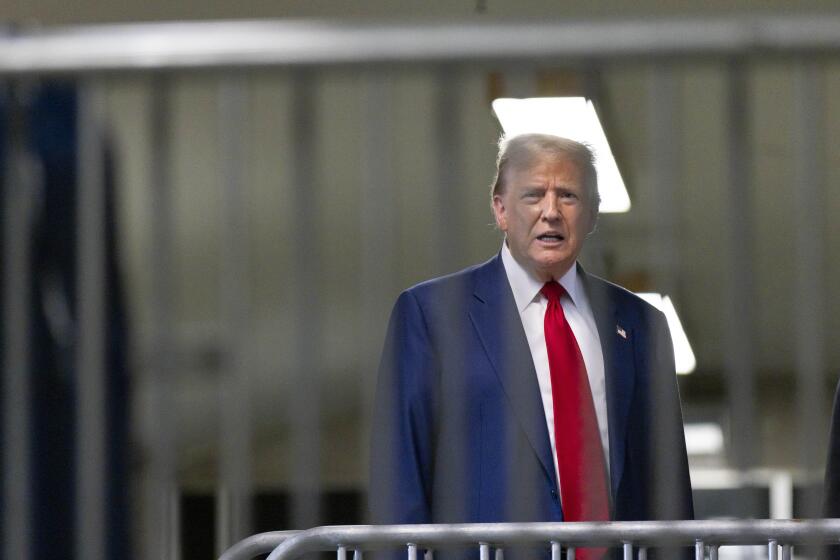Spreading the disease
As bad as things are with state government in California, remember this: There’s plenty of opportunity to make things worse.
For evidence, look no further than the nine initiatives on November’s ballot. Each measure illustrates some aspect of the state’s crisis of governance. And many of the initiatives threaten to deepen it.
This is the peculiar hell of California now: The establishment of even worthwhile policy ideas is risky because they must be constructed on the toxic sand that is the state’s governing system.
That system doesn’t work because it can’t. It is an unholy mix of three irreconcilable parts: an election system designed to produce majorities; a legislative system that requires so many two-thirds votes that it nearly amounts to minority rule; and an inflexible initiative process that permits voters to create a special set of laws outside the checks and balances of legislation and budgets. Though elements of these systems exist in democracies around the world, no other place is so foolish as to combine them.
Although the nine November initiatives are touted as cures, they serve mainly to spread the disease, and to worsen some of its worst and most painful symptoms:
Symptom 1: California tends to set often-flawed legislation in concrete and take big subjects off the table, so they can’t be easily amended by our elected representatives.
Two measures on the November ballot explicitly seek to block the Legislature from doing certain things. Proposition 23, if approved, would suspend indefinitely the landmark climate change legislation known as AB 32. Proposition 24 would override changes in the corporation tax that were produced during budget negotiations in the Legislature in 2009, and perhaps make it difficult to revisit the subject.
One reason for the “stickiness” of California law is the initiative process itself. A statute adopted by initiative can’t be amended except by another vote of the people.
The language of Proposition 19, the initiative to legalize and tax cannabis, both mitigates this problem and illustrates it. Proposition 19, unlike many initiatives, includes special provisions that permit the Legislature to make some changes to the measure (as long as those changes further the purpose of making it easy to sell weed). The measure also grants local governments discretion in regulating cannabis.
But Proposition 19 also establishes a specific method for legalizing and taxing marijuana that, under California’s Constitution, can’t be altered without another vote of the people.
This is problematic when it comes to legalizing marijuana, because if California were to become the only state to legalize the drug, there undoubtedly would be a host of new issues that might require altering the fundamental structure of Proposition 19. And that would require more action by voters. If the Legislature had created the underlying law, it would be easier to make changes.
Symptom 2: It’s much easier to change the state Constitution than it is to change the person and party who represent you in the Legislature.
Constitutions are supposed to be timeless documents that change infrequently. Legislatures are supposed to turn over frequently in response to public votes. In California, it’s exactly the opposite.
Proposition 20 and Proposition 27, two initiatives related to a longstanding fight over who draws the lines of legislative districts, illustrate this well.
Proposition 20 seeks to extend the provisions of Proposition 11. Proposition 11 gave the power to draw state legislative districts to a citizens commission; Proposition 20 would put congressional districts under this provision as well.
As for Proposition 27, it would repeal the constitutional change in Proposition 11, switching us back to the Constitution (and the redistricting rules) we had in 2008.
The very possibility of this swift, year-to-year constitutional back-and-forth contrasts with the reality of our locked-in Legislature. In many respects, we already know the results of November’s legislative elections: The Democrats will keep control of both houses, in almost exactly the same numbers they hold today. And there’s this bitter irony: California’s coast is so Democratic and its inland areas so Republican that even the redistricting reforms in Propositions 11 and 20 wouldn’t help much.
Symptom 3: Californians use the ballot to enact formulas, restrictions and other whips and chains that make balancing the budget nearly impossible.
On the November ballot, Proposition 21 is one example of this ballot-box budgeting. It carves out a new fund for parks and creates a detailed formula for how conservation and wildlife programs are funded. Yes, it does have the virtue of not taking money from the rest of the budget; it responsibly creates a new funding source for parks. But having voters decide how to pay for one state function at a time is no way to run things.
Proposition 22 is another measure that, however appealing its motivation, will constrain the give-and-take that makes budgets work. In the name of protecting local government services, it enacts a new prohibition that says the state can’t delay or take local funds that belong to local agencies, even when the state faces an emergency. Ever. It’s guaranteed to make budget deficits bigger and add to Sacramento’s dysfunction.
But even Proposition 22 isn’t as straightforwardly dysfunctional as Proposition 26, which pledges to add another two-thirds supermajority requirement (this one for votes on fees) to a state system that already demands two-thirds votes for passing budgets, raising taxes and changing school funding. Such supermajorities have been disastrous for California, creating gridlock, subverting the will of the majority and obscuring who is responsible for bad budgets.
Symptom 4. California is so broken that even good piecemeal reforms can make things worse.
Proposition 25 is an honorable effort to attack this two-thirds problem by replacing the supermajority for passing budgets with a majority vote requirement. This is the right thing to do, but, because of the nature of the system, it’s likely to make budgeting worse.
That’s because Proposition 25 leaves in place all the other supermajorities and budgetary whips and chains that cause debt and delay in governance. Minority Republicans will retain the overall leverage that these two-thirds requirements give them. And Proposition 25 may deepen budget deficits by making it easier for Democrats to pass the spending they want (since budgets will be only a majority vote) while permitting Republicans to continue to block revenue increases needed to pay for the spending.
Unintentionally, Proposition 25 and the eight other measures make the argument that California has no choice but to pursue comprehensive reforms. That means building an entirely new election system instead of merely changing the people who are in charge of drawing the lines. That means removing all the supermajorities and spending mandates and limits from the legislative system, not just one or two. That means adopting an entirely new initiative process that makes it harder to add to the state Constitution and easier to amend the laws that voters enact.
Initiatives, which must adhere to single subjects, are antithetical to broad reform. They tend to reinforce the status quo by adding one more distortion, or one more rule to the existing system. When you vote yes for any of them in such a context, you’re voting not for change but for more of the same.
Joe Mathews is a fellow of the New America Foundation and the coauthor of “California Crackup: How Reform Broke the Golden State and How We Can Fix It.”
More to Read
Get the L.A. Times Politics newsletter
Deeply reported insights into legislation, politics and policy from Sacramento, Washington and beyond. In your inbox three times per week.
You may occasionally receive promotional content from the Los Angeles Times.






